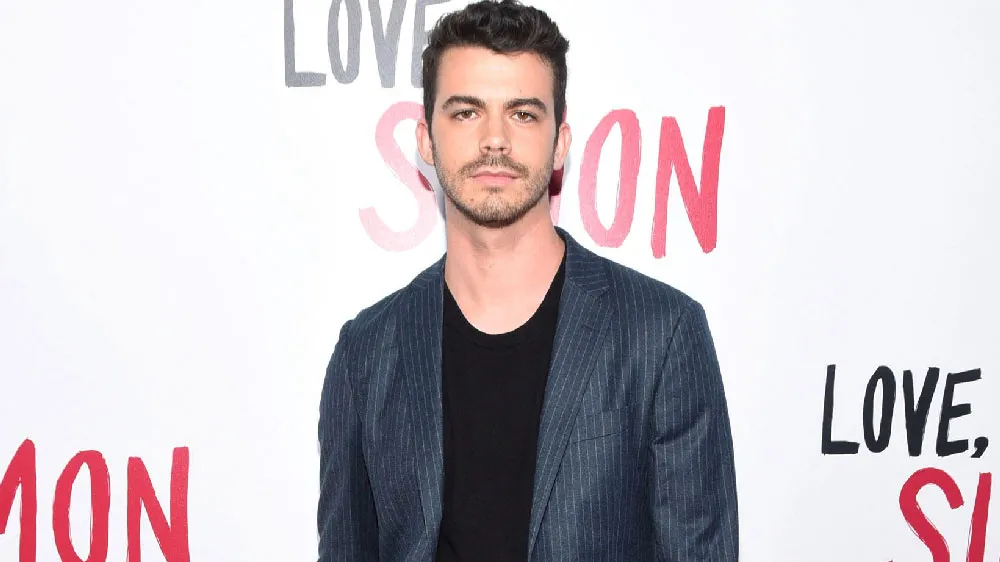October 28, 2024
Boston Pops Celebrate Halloween with Organ Wunderkind Brett Miller Accompanying Horror Classic 'Nosferatu' on Wednesday
Robert Nesti READ TIME: 11 MIN.
EDGE: It was scored for orchestra, then you reduce to an organ transcription?
Brett Miller: The job of the organ is basically to replace the orchestra. So it is fun for me such in this case, to become the Boston Pops because in this case I am using organ more like an orchestral instrument. If the score calls for a clarinet, I'll try to make the organ reproduce the clarinet sound. The same is true for strings. And there was even some organ used in the original score. With thos passages, I can let the organ rip a bit. r if it calls for strings, stuff like that. Or if it even calls for organ, there was organ in the original score. Then you then you can let the organ rip a little bit.
EDGE: Are you excited to be playing in Symphony Hall with its famous Aeolian-Skinner organ?
Brett Miller: Symphony Hall is such a landmark of a hall, and for or me, it is the room that is really the instrument. I am still pinching myself at this opportunity because I love the Boston Symphony. I love the Boston Pops. I grew up listening to Keith Lockhart and John Williams recordings with the orchestra. And it such a strange and wonderful thing to see myself in the room where it happened. The recordings. The organ was built by the firm Ian Skinner, which was based in Boston, and then I believe it was renovated a couple of years ago. The instrument really is a Boston landmark. The facade itself is just striking. You see it when you come into the hall and it is really something. It is a very special instrument in a very special hall.
EDGE: Is there a organ sound that you prefer? A heavier sound? A lighter sound?
Brett Miller: I kind of go in between, especially when I accompany a film. I mean, the film is an hour and a half long and I need to balance the sound. When I was younger, I went for a loud sound, but realized that for the audience, this can get tiring very quickly. But I have learned that the power of the organ comes with its huge dynamic range. I can go from near silence to an absolutely ear-shattering sounds. So I don't think prefer one sound or the other. I just like knowing that I have the ability to go between such extreme dynamics in seconds.
EDGE: Do you watch the film as it shown on the screen?
Brett Miller: This one I do because I have done enough times and have memorized the music. But also since I'm using the original themes, I get to do a great deal of improvisation. So it's never the same every time I play it. And watching the film I can get a feel on how the audience is responding to the music. "Nosferatu" is kind of funny – it starts off almost campy and light-hearted, then gets really, really dark; so I always like to see the shift in the audience – laughing at ifirst, then watching their reaction change as Nosferatu brings plague and every man character – spoiler alert – dies with the heroine sacrificing herself to kill Nosferatu. So the mood in the room shifts very quickly. And I like to feel that moment.
EDGE: What is it about "Nosferatu" that appeals you as a film?
Brett Miller: What has always amazed me is the cinematography. It was filmed mostly on location, with all this stuff filmed on location. But the biggest thing is how creepy it is for a film that's 102 years old. It still has a disturbing factor to it, which is great for Halloween. It's funny I like to joke that my generation has gotten to know "Nosferatu" from SpongeBob episodes, and I hear that a lot. And they see it as this campy thing, which it is not. And it is fun to watch the audience see their expectations unpended. "Nosferatu" is a scary and disturbing movie.
EDGE: And the movie never seems to go away. There is a major remake coming...
Brett Miller: Yes. That opens on Christmas, no less! I mean, vampires for the holiday season. Here is the granddaddy of vampire movies get a remake!
EDGE: What print will you be showing?
Brett Miller: It is the most recently restored version. So it's the print is crystal clear. It's actually even tinted at different moments. For instance, when ight falls, the film is tinged with a purplish color. When it is daytime, it turns yellowish; when the sea is involved, it turns blue. It is a really good copy that been lovingly restored as it was when it premiered in 1922 and follows the original color coding scheme. I believe it was digitally restored from one of a print once thought lost.
EDGE: What about other silent movies? Would you like to do this with one of them?
Brett Miller: Of course. At the top of head, I think of "Wings," which was one of the first winners of the there's some massive dramas. I mean, wings, which is 1927 which won the Academy Award for Best Picture – I think it was the first. It is a great, great movie. I did a screening that used the score from the original film, which was really fun because I get to this traveling back in time with these films. And it is amazing to see these movies when they are restored. "Metropolis" is another favorite, because it a classic sci-fi film that is so unique. And then anything Buster Keaton, I always find Keaton really just. Is his comedy is really still refreshing now, and his films are just absolute masterpieces.
EDGE: And you are studying to be a conductor, so we may just to get to see on the podium at Symphony Hall as well?
Brett Miller: Yes. I am in Rochester right now.at Eastman School of Music doing my Masters in orchestral conducting.
Brett Miller plays the original score to "Nosferatu" at a screening of the film, Wednesday, October 30, 2024, 7:30pm, at Boston's Symphony Hall, 301 Massachusetts Avenue, Boston, MA. For more information, follow this link.
Robert Nesti can be reached at [email protected].







